The time-tested and beloved cucumber "Othello" from Dutch breeders
The Othello cucumber appeared on the seed market at the end of the 20th century. The culture is appreciated for its unpretentious care and high productivity with low labor costs. During cultivation in the open field does not require pollination; in greenhouses, the bushes are sprayed with a solution of boric acid and sugar to attract bees. Amicable and long-term fruiting allows you to enjoy the excellent taste of cucumbers until mid-September.
In the article, we will consider the features of cultivation and care, the rules for forming bee-pollinated cucumbers and methods of protection against insect pests.
The content of the article
Description of the hybrid
Othello f1 - bee-pollinated early maturing hybrid... Developed by Czech breeders of the agricultural firm Moravoseed.
The length of the main stem reaches 2 m. The bushes are highly branched, medium-leaved, mainly with female flowers. 3-6 ovaries are formed in the leaf sinus.
In the photo - cucumber Othello f1.
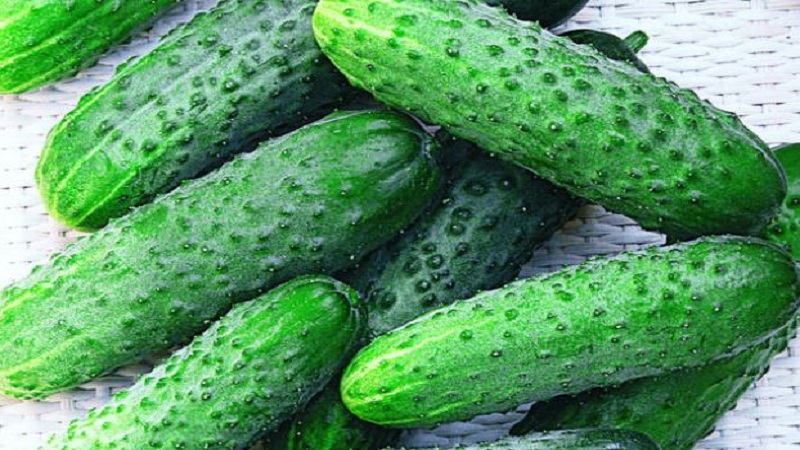
Distinctive features are presented in the table.
| Indicators | Characteristic |
| Ripening period | 40-45 days |
| Pollination type | Bee-pollinated |
| Weight | 70-80 g |
| Length | 10-12 g |
| The form | Cylindrical |
| Coloration | Emerald, with white blurry stripes |
| Leaves | Medium green |
| Pulp | Dense, crispy, no voids |
| Taste | Sweetish, without bitterness |
| Skin | Thin, with dense edging and white spines |
| Appointment | Universal |
| Yield | 10-12 kg / m² |
| Sustainability | Olive spot, powdery mildew, cucumber mosaic virus, cladosporiosis |
| Transportability | Excellent |
Chemical composition, calorie content and benefits
The calorie content of cucumbers is 14 kcal per 100 g.
Chemical composition:
- vitamins A, B1, B2, B4, B5, B6, B9, C, E, H, K, PP;
- minerals: potassium, calcium, silicon, magnesium, sodium, phosphorus, iron, iodine, copper, selenium, fluorine, zinc.
 When consumed regularly, cucumbers have a beneficial effect on the body.:
When consumed regularly, cucumbers have a beneficial effect on the body.:
- normalize water-salt balance;
- accelerate metabolism;
- dilate blood vessels;
- normalize blood pressure;
- break down and remove cholesterol plaques;
- dissolve stones and sand in the kidneys and bladder;
- normalize the work of the pancreas;
- improve blood composition.
About other Dutch hybrids:
Unpretentious, fruitful and tasty cucumber "Crispina"
Agrotechnics of cucumbers
The manufacturer advises to grow Othello cucumbers outdoors.... This is due to the type of pollination of the plant: bees are needed to form the ovaries.
Culture grown through seedlings or by direct sowing into the ground... Planting care consists of frequent loosening, weeding, sufficient watering and top dressing. The hybrid is resistant to the main diseases of cucumbers, which makes farming easier.
Direct sowing in the ground
Cucumbers love light, loamy and loose soil with a neutral pH = 6.5-7... In the fall, the site is dug up and sown with siderates, which quickly gain green mass, and during the winter they manage to rot and enrich the soil with nutrients. The best are oil radish, phacelia and white mustard. In addition to increasing soil fertility, green manure prevents the appearance of fungal infections.
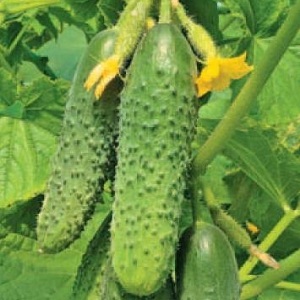 Plants can be mowed and dug into the ground, or left to rot on the site, and collect plant residues in the spring. The ground below them will become fertile and loose.
Plants can be mowed and dug into the ground, or left to rot on the site, and collect plant residues in the spring. The ground below them will become fertile and loose.
Direct sowing begins in late May or early June... The air temperature should warm up to at least +20 ° С, the soil temperature - up to +16 ° С.
Seeds in a colored shell do not need to be processed... They have already passed the decontamination procedure at work. Grains without treatment are pickled in a 1% solution of potassium permanganate (1 g of crystals / 100 g of water). The material is soaked for 15 minutes, washed with clean water and dried.
The site is chosen from the south, protected from the through wind... When sowing, the rule of crop rotation is observed.
Reference. Cucumbers should not be grown for several years in a row in the same place or in areas where zucchini, squash, pumpkin previously grew. The best precursors for cucumbers are cabbage, carrots, onions, legumes, and garlic.
The beds are dug with a bayonet shovel 70 cm wide and 20 cm deep. The plot is fertilized with peat, sawdust and chicken droppings (5 kg / 1 m²). The beds are leveled with a rake and tamped slightly. In the middle, a groove of 2-3 cm is drawn and spilled with boiling water or a hot solution with potassium permanganate, liquid growth stimulator "Energin" (two capsules per 10 liters).
Seeds are spread at a distance of 40-50 cm and lightly pressed into the ground with a finger... Sprinkle on top with moist soil and sprinkle with hot red pepper to protect against ants, slugs and mice. After stretching agrofibre to protect against night frost.
Seedling planting
Growing cucumbers through seedlings will help speed up the growing season and the beginning of harvesting... Sowing is carried out in mid-April.
Prepared seeds soaked in preparations "Epin", "Ivin", "Zircon" to stimulate germination and embedded in a moist soil mixture (two parts of peat and humus, one part of sawdust). Before sowing, the soil is disinfected with a dark solution of potassium permanganate or "Fitosporin-M".
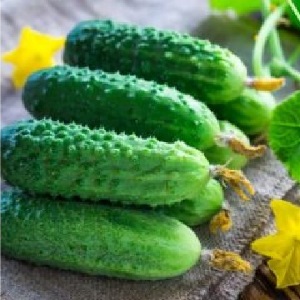 Peat pots 0.5 l each are used as containers for seedlings. or large plastic cups that are easy to cut when planting. The container with the seeds is covered with plastic wrap and placed in a dark, warm place.
Peat pots 0.5 l each are used as containers for seedlings. or large plastic cups that are easy to cut when planting. The container with the seeds is covered with plastic wrap and placed in a dark, warm place.
After germination, the containers are taken out on the windowsill on the south side of the house, the film is removed. If necessary, the seedlings are supplemented with a phytolamp.
Seedlings watered with warm, settled water 1-2 times a week.
At the stage of 4-5 true leaves, it is transferred to a permanent place... On the site, holes are formed with a depth of 20 cm, at a distance of 70 cm from each other, and the seedlings are planted together with an earthen lump or directly in peat pots. The roots are sprinkled with earth, lightly tamped and watered abundantly with water.
Reference. The rules for preparing the soil for planting ready-made seedlings are the same as for direct sowing.
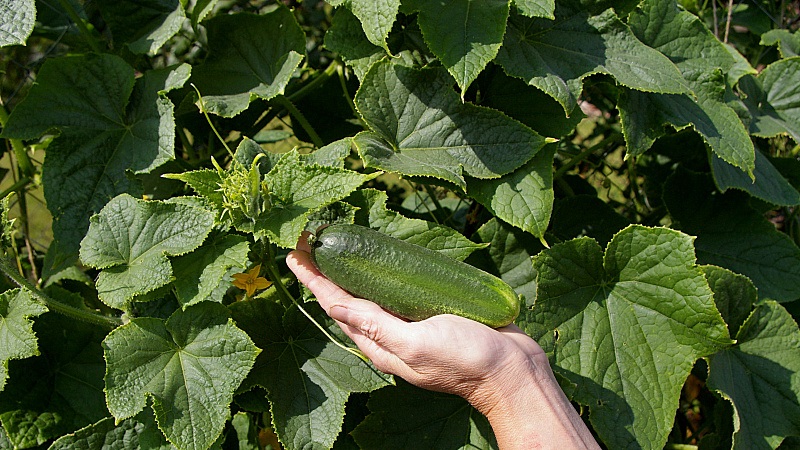
Cucumber care steps
The Othello hybrid is an unpretentious plant, so the rules for caring for it are standard:
- When shoots appear after direct sowing, the agrofibre is lifted from the southern windless side.
- Plantings are watered in the evening, with warm settled water or rainwater, under the root, 2-3 times a week, or a drip system is installed. In hot weather, the bushes are watered every day.
- After each watering, loosening is carried out, preventing the formation of a crust on the soil surface.
- Weeding is carried out regularly, with complete removal of weeds. To reduce the frequency of weeding, cover the soil with straw, hay, sawdust or pine needles.
- Top dressing is applied regularly, in small quantities, at least five times during the growing season. Mineral and organic fertilizers alternate.
- During the period of active growth, the plants are tied to a trellis. This facilitates their care and creates additional ventilation.
- The fruits are harvested every 2-3 days. Cucumbers are not prone to overgrowing, but without regular harvesting, it is difficult to achieve high productivity.
Options for organic and mineral dressings (calculated per 10 liters):
- two capsules "Energena", consumption per 1 m² - 3 liters;
- 25 g of the preparation Agricola-5, consumption per 1 m² - 3-4 l;
- 50 g of "Effecton-O" means, consumption per 1 m² - 4 l;
- 25 g of nitrophosphate, 50 g of Agricola Vegeta, consumption per 1 m² - 5 liters.
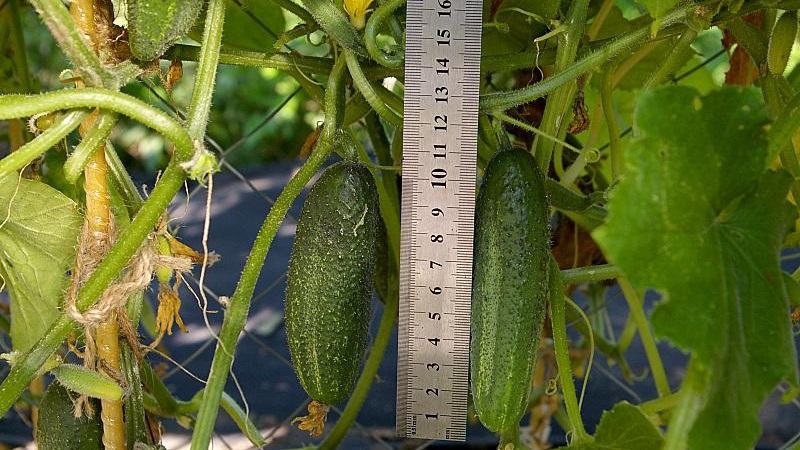
Fertilizers are applied once a week, after watering.
And more about «dutch»:
Features of cultivation and possible difficulties
Rules for the formation of bushes of bee-pollinated hybrids:
- At the stage of 4-5 leaves, the bushes are tied to a trellis.
- Lateral stepchildren do not touch until the first ovary. Then they are tied to the trellis. To avoid injury, the whips maintain an angle of 60 ° between the central and lateral stepson.
- Lateral shoots are twisted around the main stem, then they are attached with tendrils.
- The entanglement is periodically repeated, the extra stepsons and antennae are removed.
- When the main stem reaches the trellis, it is wound around it or thrown over and pinched the crown a meter from the ground.
If desired, Othello cucumbers can be grown in the greenhouse, in regions with short summers. At the same time, it is important to ensure free access of bees to the premises. Doors and vents are kept open. During the flowering period, the bushes are irrigated with a solution of boric acid with sugar (2 g of powder, 100 g of sugar per 1 liter of water) to attract insects or put jars of honey water.
Important! Chemicals are not used during this period, since they lead to the death of bees.
Diseases and pests
The Othello hybrid has strong immunity to olive spot, powdery mildew, cucumber mosaic virus, cladosporiosis. It tolerates drought and changes in average daily temperature. However, preventing disease will not hurt:
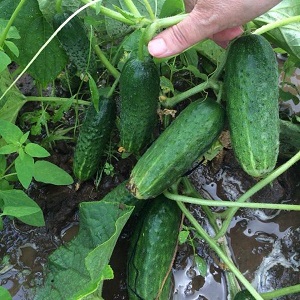 soil cultivation with copper sulfate;
soil cultivation with copper sulfate;- disinfection of seeds in a solution of potassium permanganate;
- removal of plant residues in the spring and frequent weeding of the beds;
- moderate watering;
- soil mulching;
- correct forming of bushes;
- timely feeding with phosphorus and potassium;
- control of the nitrogen level in the soil.
Cucumber plantings are susceptible to attacks spider mites, melon aphids, whiteflies, bears and slugs. Treatment with insecticides is difficult due to the early maturity of the culture, therefore folk remedies are used to scare away insects.
The table contains the main signs of pest infestation and recipes for controlling them.
| Pest | Signs | Treatment |
| Medvedka | Large passages in the ground near bushes, delay in plant development | 200 g of shavings of laundry soap per 10 liters of water, 1 tbsp. l. any washing powder. Pour the solution into the holes |
| Slugs | Shiny slime on leaves, holes in cucumbers | Traps from cans of beer, ammonia solution (2 tablespoons per 5 liters of water). Processing is carried out at night or the pest is collected by hand
|
| Spider mite | Small white dots on the back of the leaves, thin spider webs, braiding bushes | 150 g garlic arrows in 3 liters of water. After three days, dilute the infusion with water 1: 1, process the bushes after sunset |
| Aphid | Dropped leaves, drops of honeydew, large concentrations of ants | 30 g of hot pepper in pods per 10 liters of water, 200 g of tobacco shag. After a day, add 25 g of liquid soap and 100 g of wood ash. Process plantings twice a week |
| Whitefly | Sticky bloom on stems and leaves, many white larvae at an early stage and schools of white moths at a later stage. | 30 g dry dandelion roots per liter of water. After 4-5 hours, process the planting |
Harvesting and application of the crop
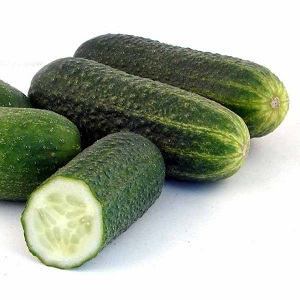 Harvesting is carried out every 2-3 days to stimulate fruiting... The first fruits appear 40-45 days after germination. The culture bears fruit for a long time and amicably. Harvested until mid-September.
Harvesting is carried out every 2-3 days to stimulate fruiting... The first fruits appear 40-45 days after germination. The culture bears fruit for a long time and amicably. Harvested until mid-September.
Cucumbers have a dense structure; cavities do not form inside. The taste is excellent. There is no bitterness even if watering rules are not followed.
The fruits are suitable for fresh consumption and canning... Consumers report an improvement in taste when pickled or pickled in vinegar. In a jar, cucumbers do not soften, retain their crispness.
They can be stored in a cool place for about three weeks. The hybrid perfectly tolerates transportation without losing its presentation.
Advantages and disadvantages
Let's take a closer look at what the hybrid is remarkable for and what confuses gardeners in it.
Advantages:
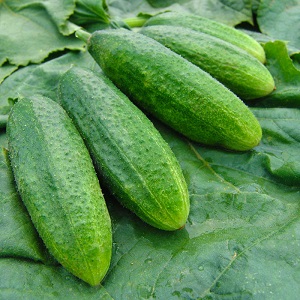 early maturity;
early maturity;- great taste;
- friendly fruiting;
- high productivity;
- keeping quality;
- high portability;
- resistance to the main "cucumber" diseases.
disadvantages:
- difficulties with pollination when grown in a greenhouse;
- the need to form bushes.
Reviews
The hybrid was highly appreciated by farmers and consumers due to its unpretentious care, high productivity and excellent taste.
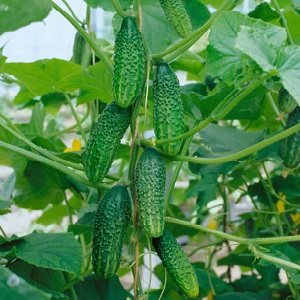 Irina, Stary Oskol: “I bought a bag of Othello seeds last year for testing. Out of ten, seven came up, which is already good. The seeds were not treated with anything, they were grown through seedlings. The cucumbers turned out to be smooth, dense, crispy, without bitterness, good fresh in salads. I closed several cans for the winter, and the family members were satisfied. Inside without voids and do not soften ".
Irina, Stary Oskol: “I bought a bag of Othello seeds last year for testing. Out of ten, seven came up, which is already good. The seeds were not treated with anything, they were grown through seedlings. The cucumbers turned out to be smooth, dense, crispy, without bitterness, good fresh in salads. I closed several cans for the winter, and the family members were satisfied. Inside without voids and do not soften ".
Ivan, Belgorod: “I grow Othello cucumbers in my garden at my dacha. I sow directly into the ground and cover with foil. After germination, I take it off and, as it grows, I tie the lashes. Taking care of your culture is not difficult. Drip irrigation was installed on the site, we feed it with a mullein and ready-made mineral fertilizers ".
Conclusion
The Othello hybrid is characterized by fast ripening and amicable fruit return. Cucumbers do not outgrow, do not barrel, if removed from the bush in time. The culture tolerates heat and sharp jumps in the average daily temperature, and is immune to major diseases. The main care comes down to compliance with the standard rules of agricultural technology.
Correct formation of bee-pollinated plants with a garter to the trellis ensures high yields, creates additional ventilation and facilitates maintenance. Experienced farmers advise not to neglect the rules of prevention - then your chances of getting a rich and healthy harvest are much higher.